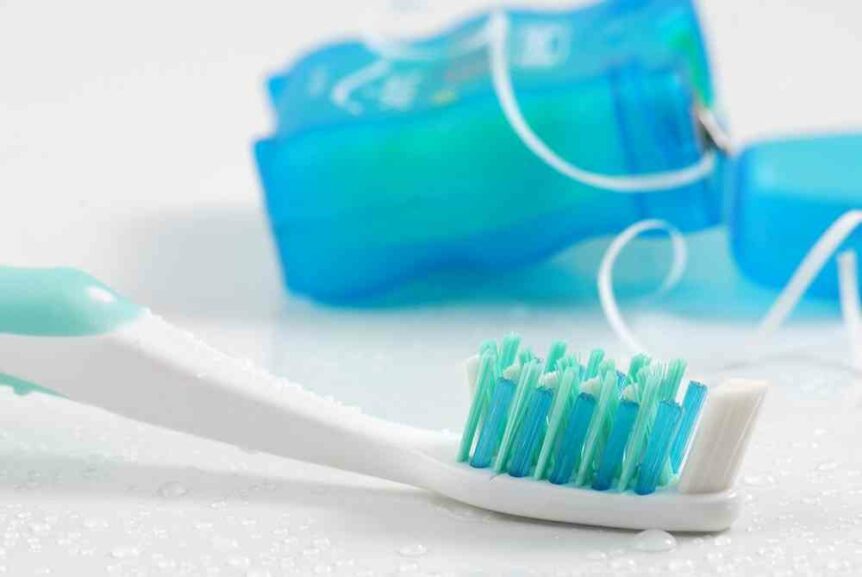FAQs About Flossing & Brushing
General Dental Hygiene
In addition to routine dental visits, regular brushing and flossing is a vital component of preventative dentistry. We recommend brushing and flossing at least twice a day to help protect against tooth decay and gum disease.
These habits can help stop the buildup of plaque and tartar. Brushing and flossing along with scheduling routine checkups every six months can keep your teeth healthy.
Do your gums bleed when flossing?
It’s common. Gums bleed when flossing, and they bleed for a number of reasons:
- Bacteria may be building up around a poorly restored filling or crown causing irritation to the gum tissue
- You may be using poor flossing techniques when you floss
- You may not be brushing your gums properly when brushing your teeth
- A hard deposit called tartar (calculus) may be present on your teeth
- You are not be keeping current with your dental cleaning appointments
- You have had your teeth cleaned recently and had a lot of build-ups
If your gums bleed when flossing, this may be a sign of gum disease (gingivitis) or irritation. Keep reading to determine whether or not you should make an appointment with your dentist.
What should you do if your gums bleed when flossing?
If your gums bleed when flossing, floss. It may seem like flossing is doing more harm than good, but the bleeding will go away with enough proper flossing. Unless there is a systemic problem or actual physical damage to the gum tissue, keep flossing. The bleeding should stop within 3-10 days.
Most patients will stop flossing an area that bleeds when flossed. If your gums bleed when flossing, properly brush and floss the area more often. Then have your dentist look at it. If you have been flossing for 7-10 days and your gums still bleed when flossing, you should see a dental hygienist. Let your dental hygienist evaluate your flossing technique and whether or not there is a need for gum treatment.
How often should you floss your teeth?
Flossing gets where toothbrushes can’t. If you are not flossing, you are only cleaning 50% of all the areas in your mouth. If you only floss once in a while, your gums will bleed when flossing. The tissue between your teeth is not used to being stimulated. When you floss often and regularly, the gum tissue between your teeth becomes more resilient and stops bleeding when flossed. We recommend our patients floss once a day. The best time to floss is before you brush your teeth before bed. This allows the fluoride in your toothpaste to contact the most surface area of your teeth. If gums bleed when flossing, we recommend flossing after each meal until bleeding subsides in 3-10 days.
If you don’t like to floss, try using a water flosser. A water flosser is not an alternative to flossing, but it is better than not flossing at all. It is ideal for those who have trouble with their hands and cannot hold floss or floss picks.
What is the proper technique for flossing teeth?
Floss is not a toothpick. Yes, it can dislodge food particles above the triangle of gum between each tooth. But the purpose of flossing is removing that slimy, goopy plaque that grows between the tooth and the gum. To achieve this:
- Go to the base of the triangle between each tooth with the floss.
- Go down as far as you can go with the floss, without cutting your gum.
- When working the floss between your teeth(which are supposed to be tight), move the floss back and forth in a cheek-to-tongue direction. Don’t let the floss snap into your gums. This is what cuts the gum tissue.
- Position the floss between your tooth and gum tissue.
- With the floss in a C shape, gently push the floss against your tooth and scrape straight upward. Do this to each tooth separately, two times to each side of each tooth.
Will brushing your teeth keep gums from bleeding when flossing?
Brushing, like flossing, is simple to do and can also be done improperly. When brushing your teeth with a manual toothbrush:
- Use a toothbrush with soft bristles only.
- Gently brush your gums when brushing your teeth. Target the crevices between the teeth and gums with half the bristles brushing the gums and half the bristles on the teeth. Don’t forget to brush behind the last tooth on each row.
Once you start brushing correctly, your gums may feel sore and bleed a little. Any bleeding should subside in a week or two.
If your gums bleed when flossing, and you have been flossing your teeth every day for a week to 10 days, call your dentist and book an appointment. Let one of our dentists evaluate your flossing technique and whether or not there is a need for gum treatment. Remember, brush and floss only the teeth you want to keep! Keep smiling beautifully!


